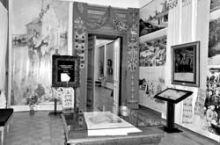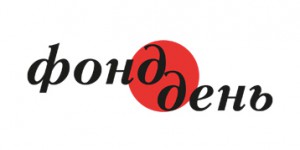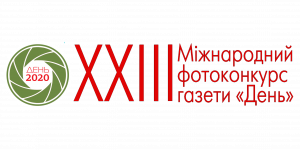Olha Shevchenko’s article appears below in a slightly abridged version.
Readers are invited to submit their opinions.
Three years ago the Taras Shevchenko Museum closed for repairs. The question of creating an entirely new exhibit then arose. That was when a battle royale broke out between the then director general, S. Halchenko, and N. Klymenko, head of the biographical department. The museum staff split into warring groups. In fact, it was a confrontation of two concepts for the new exhibit, a conflict of two dimensions in which the great poet was visualized.
The exhausting and protracted war was reported in the media and finally ended in Klymenko’s victory. Eventually she took over the director general’s post and won the right to supervise the construction of the Taras Shevchenko National Museum’s new exhibit. The museum was ceremoniously opened in late December 2006. Now everyone can visit the Taras Shevchenko Museum at 12 Taras Shevchenko Blvd. and explore the “new” exhibit.
What makes the Taras Shevchenko National Museum unique is that it has two objectives: to reveal Shevchenko the poet and Shevchenko the artist. For this reason, from its very inception it was called a “literary-artistic” museum. The first exhibition, created in 1949, took every aspect into consideration. This difficult task was successfully carried out by Hlafira Palamarchuk, the deputy director in charge of research. She used V. Miyakivsky’s works for the Shevchenko House Museum and drew up a thematic exhibit plan that served as the groundwork for the first exhibition at the Taras Shevchenko State Museum.
Shevchenko’s extensive biography was published, which highlighted the main stages of his life, works of art, publications that appeared during his lifetime, and his most important poetic works with illustrations by Soviet artists and the poet’s contemporaries. This monograph about the Kobzar included numerous quotations, paintings by Soviet artists, and, of course, the “right ideological orientation” — as required under the Soviets. A separate exhibition hall was dedicated to such topics as “Shevchenko and Soviet Revolutionary Democrats,” “Shevchenko in the Great Patriotic War,” etc.
Remarkably, all this politicization was regarded as secondary, a necessary tribute to the times, and nothing more. The foundation of that exhibition was scholarly and truthful. Shevchenko the artist could not be overshadowed by quotations from Lenin or marble busts of Soviet critics and revolutionary democrats. People came to visit the museum from every part of the world; long lines of visitors waited for their turn to partake of the secret of Shevchenko’s brilliant creativity and learn more about the Ukrainian genius.
As the years passed, the exhibition was revised (renewed) several times. During the restoration and repairs executed in the second half of the 1980s the question arose as to how the new museum should be organized, what concept should be chosen, how the story of Shevchenko should be conveyed to numerous visitors, both young and old.
Various designs were submitted. A design by the Moscow-based artist Kropyvnytsky was dominated by the pryzba [banked earth around a Ukrainian peasant home, which serves as a bench], a motif that would be repeated in all the exhibition halls, as a symbol of the Ukrainian peasant house. Shevchenko’s works would be displayed above the pryzba. Another creative team, led by the artist Tetianych and architect Ihnashchenko, proposed a global cosmic project to turn the museum premises into the interior of a spaceship, with oval doors and windows modeled on a biosphere. The exhibition was supposed to end in a hall containing an astronaut’s seat, so that every visitor could sit down in it and view Planet Kobzar through a telescope.
All these projects were turned down by the museum’s research staff. Instead, a design submitted by the artist Anatolii Haidamaka was approved. It consisted of huge frames with taut strings symbolizing Shevchenko’s two gifts: art and poetry. The displayed items, mostly paintings, were to be attached to these strings.
Work on this exhibit began in 1989, which involved the close creative collaboration of researchers in the exhibit departments and a team of artists. All problem questions, complex thematic issues, and solutions were thoroughly analyzed during staff meetings involving the entire research staff. A decision was made to keep the 1949 (previous) thematic structure as the basis of the new exhibit, expand it substantially, and, at the same time, remove items wherever necessary. All classical Marxist-Leninist quotations and works by Soviet painters were removed, and the textual material was thoroughly abridged. Therefore, it is surprising to read Liudmyla Taran’s article “Taras Shevchenko: Taut Strings” published in Dzerkalo tyzhnia (Jan. 27, 2006), in which the author writes that “A drawback of the 1989 exhibit is that it is overburdened by materials, especially textual ones, piled up in three or four stories.”
Meanwhile, the 1989 exhibit offered a deeper insight into such topics as Shevchenko’s studies at the St. Petersburg Academy of Art (copies of gypsum statues brought from St. Petersburg, often mentioned by Shevchenko). This prompted the creation of a separate exhibition hall entitled “Shevchenko the Engraver.” Here the emphasis was on his major works of art, including the painting Kateryna, and others that explored the theme “Shevchenko the artist.”
But by far the most complicated aspect of the curators’ work was how to reveal Shevchenko the poet in a new way. Allowances have to be made for the psychology of visitors, who tend to perceive everything visually and don’t want to bother reading long texts and summaries. Every work of poetry had to be presented in such a way as to make visitors remember it, so that everyone leaving the museum would be impressed.
How was this complicated task to be carried out? How could one of Shevchenko’s major poetical works, the political satire “The Dream,” be conveyed in the language of museums? This particular work brought the greatest trouble to the poet, depriving him of freedom, scaring the gendarmes, and enraging the Russian emperor. Every Ukrainian should know this poem.
An interesting solution to the problem was found. The poem was illustrated by the works of the noted French artist and Shevchenko’s contemporary, Honore Daumier (1808- 79) who, like Shevchenko, portrayed the Russian ruler as a clumsy bear. This was one instance of a genuine rapprochement between France and Ukraine.
One of the most complex tasks facing both the scholars and the artists was the first hall, where it was crucial to tell the story of a great event, the birth of the Ukrainian genius, in the language of museum artifacts. This task was effectively accomplished. Instead of the mandatory magnificent quotation from Lenin about the horrors of serfdom, 19th-century icons were displayed above Shevchenko’s pencil sketches portraying his grandfather and grandmother, and their house in Kyrylivka. In the middle of a large table covered with a Ukrainian kilim, a Ukrainian tradition practiced on important holidays, lay a registrar’s file containing an entry attesting to the date and place of Shevchenko’s birth.
While working to put together the new exhibition, the staff discovered some laws governing its successful construction: profound knowledge of the poet’s biography, epoch, and contemporary history, as well as the ability to find what is necessary, the right place for every item, in accordance with the logic of the display.
The 1989 exhibition passed muster. It was examined by several commissions appointed by the methodology department of the Ministry of Culture, experts from the Academy of Sciences of Ukraine, and directors of Kyiv museums. They pointed out its positive aspect: its scholarly nature, accessible exposition, and highly artistic design.
The ceremony launching the new exhibition of the Taras Shevchenko State Museum in 1989 was an important event in the cultural life of Kyiv and the rest of Ukraine. Olha Polianychko, the director of the museum, the artist Anatolii Haidamaka, and the team of researchers were awarded government decorations for creating the exhibit.
An independent and democratic Ukraine offered many more opportunities to revive Shevchenko’s true image in the exhibit. How did the museum’s scholars and director general use these opportunities? It is no exaggeration to say that the so-called renewed exhibit is shocking from the first hall to the last.
The expository structure of the materials has been violated, and subtopics and thematic clusters have been broken up. Several examples are in order. In the first hall, in place of the icons hanging over the portraits of Taras Shevchenko’s father, grandfather, and their house in Kyrylivka is a huge poster portraying a horse-driven cart, with another poster underneath depicting a herd of horned cattle-namely, nearly life-size oxen. The ledger with Taras Shevchenko’s birth certificate is not on a festively decorated table, but on an ordinary one spread with an embroidered towel, which was never done in Ukraine.
Walking through the exhibition halls, one notices a great many other surprises. The topic “The 1840 Kobzar and the Formation of New Ukrainian Literature” is rendered haphazardly. Portraits of literary classics are arranged in a bizarre chessboard manner, with some affixed to piers. Portraits of the Repnin family are hung on different walls, in different halls. This makes it impossible to relay the complete story of Shevchenko and the Repnins. Nor will you see the complete story of Shevchenko’s participation in the Kyiv-based archaeological commission that commissioned him to create a series of architectural landscapes in various gubernias of Ukraine.
It is hard to believe that this “disencumbrance” of the previous exhibit’s “burden” was really necessary. The current display lacks all items that earlier served to reveal and explain one of the world masterpieces of political poetry, Shevchenko’s satirical poem “The Dream,” to which the sixth exhibition hall was once entirely dedicated. Indeed, why offend the Russian emperor and show visitors political cartoons by some French painter by the name of Honore Daumier, along with Shevchenko’s satirical lines about the “tsarist bear”?
“Shevchenko has written a new poem, Ivan Hus. I found myself pleasantly pondering this brilliant personality that we have — Taras Shevchenko — for only a genius can use his own feelings to perceive the true needs of people and the entire era; this is something no science, no knowledge can provide without that burning poetic, and simultaneously religious, insight,” wrote Vasyl Bilozersky, a member of the underground political organization known as the Brotherhood of Saints Cyril and Methodius. But you won’t find even this poem in the “new” exhibition — except for two facsimile sheets with an autograph and a small portrait of Safarik in a shopwindow. That’s all.
Shevchenko recited all these works from his manuscript collection Three Years during the meetings of the brotherhood whose members were patriotically-minded Ukrainian intellectuals, and which was a threat to the political system of the Russian empire. However, this topic is also executed in a shopwindow format, modestly and inconspicuously — obviously because the organizers of the new exhibition regarded it as being of minor importance. As a result, the current display lacks the excellent 19th- century oils created by brotherhood members Panteleimon Kulish, Mykola Hulak, and Oleksandr Navrotsky, which were displayed in the past.
The other halls also present a disheartening sight, as they lack such thematic clusters as “Shevchenko and Marko Vovchok”, “Shevchenko and Akakii Tsereteli,” and others. The 15th hall offers a markedly inept portrayal of Shevchenko’s death, burial, and the transfer of his remains to Kaniv. This hall is packed with minor items and posters seen in the preceding halls. Instead of a short and precise account, you are faced with a four-tiered composition: Shevchenko’s personal belongings topped by an autograph of his last poem (which is impossible to decipher) and the poet’s death mask topped with a crown of thorns. All this is attached to a red carpet runner that does not correspond to the topic. This exhibit does not have a single painting by M. Mykeshyn, F. Vereshchagin, L. Zhemchuzhnikov, M. Dmitriiev, and P. Eisner, who painted Shevchenko lying in state in the church of the Art Academy.
The story of Taras Shevchenko ends with his portrait, painted by Fedir Krychevsky in 1936, and scattered pages from the poet’s notebook that he hid in his boot when he was a Russian army private in exile — something we saw in the hall dedicated to Shevchenko’s exile. Apparently, the organizers’ imagination was limited.
But the most astonishing feature of the “new” exhibition is, of course, the banners. You may ask: what is a banner? This is a new word and it means an advertising poster. In this instance, these are copies of Shevchenko’s watercolors and sepias enlarged hundreds of times, which run from ceiling to floor, with the originals hanging above, small and inconspicuous. Shevchenko himself would have been surprised. What are his small works of art compared to these huge banners! Other banners depict Kyrylivka, engravings of St. Petersburg and Kyiv cityscapes, engravings by Opanas Slastion, icons, and Cossack Mamais. Their massive size is overwhelming, and they dwarf the originals. After exploring such an exhibit, you are not likely to remember a single work of art created by Shevchenko. Nor will you learn more about him as a poet of genius. You will mostly remember those huge banners.
New banners are now hurriedly being added, and the glossy banners are being replaced by matte ones. Excerpts from Shevchenko’s poems in boldface type are being added to the banners. In a word, they are filling the empty banner exhibit with some content. Some banners are being moved. Thus, the oxen on the banners in the first hall were transferred from the first wall to the fourth, replaced by icons against the backdrop of a field with a haystack.
However, none of these additions, changes of banners, and their move from one wall to another, cannot fundamentally alter the overall picture.
The museum’s management is encouraging visitors — among them journalists, ministry officials, and writers — to leave favorable comments about the exhibit. If we really care about preserving Shevchenko’s true image and that of his poetry and works of art; if we want to prevent his original works from being buried under these banners, let’s start telling the truth and call a spade a spade.
Olha SHEVCHENKO is the administrator of the Taras Shevchenko Literary-Memorial House Museum







